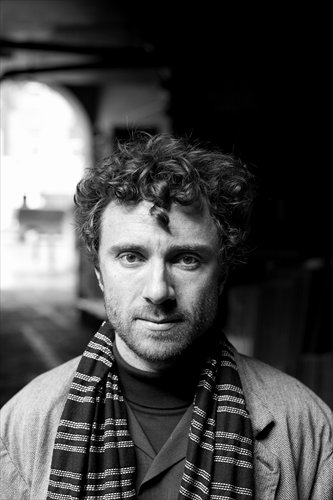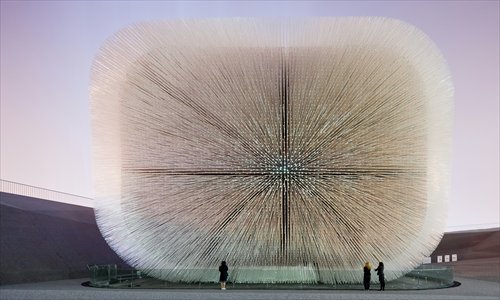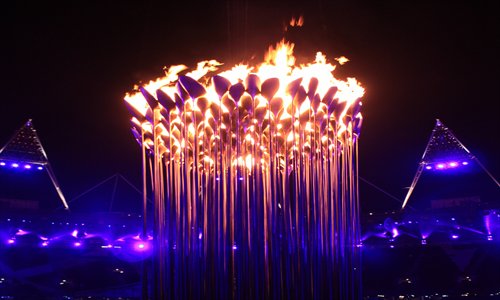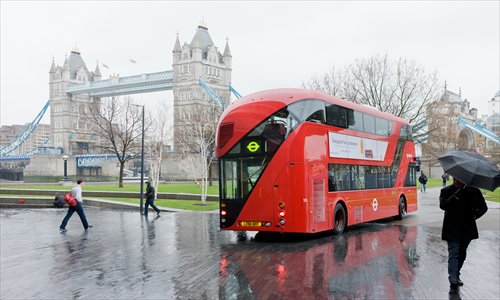Thomas Heatherwick
During World Expo 2010 in Shanghai, British architect Thomas Heatherwick, the designer of the UK Pavilion, was asked by a local visitor, "Why is your pavilion so empty?" Heatherwick replied, "Don't you see? There are hundreds of thousands of seeds all around the world. If you think they are nothing, I just have nothing to say."

Thomas Heatherwick. Photos: Courtesy of Heatherwick Studio
When the Seed Cathedral, a cube covered with 60,000 waving acrylic rods with seeds at the tip, was presented to the world, Heatherwick provided a unique response to the question, "How can a building represent a nation?"
Heatherwick recalled his design to the Global Times while he was in town giving a speech at the Shanghai International Convention Center in Lujiazui, Pudong New Area, last week.
"To be honest, when the British government commissioned me for the assignment of designing the UK Pavilion at the World Expo, the first thing that popped up into my mind was, I will never bring the British teapot, Sherlock Holmes' tobacco pipe, London's rainy weather or Queen Elizabeth here," he told us. "That would be very boring."
Heatherwick's speech focused on his most famous works, including the Seed Cathedral, the Olympic Cauldron for the London 2012 Olympic Games, and the New Bus for London.
"I don't always know what I want at first, but I know what I don't want, which is usually my method of thinking when I'm finding a design solution," Heatherwick told the local audience during his speech.

The Seed Cathedral at World Expo 2010 in Shanghai (above). Photos: Courtesy of Heatherwick Studio
Heatherwick told us that he often compares his work to what a detective does. "Finding a design solution is like solving a crime," he said. "We're a bit like an investigative team. We analyze, explore lines of inquiry. Then we eliminate what we don't want or something impossible, until we're left with the solution. And finally, we go: 'Oh, that's it!'"
The final concept for the design of the UK Pavilion focused on "the future of a nation," so as to avoid repeating clichéd or outdated ideas of a national pavilion, and also to provide space for imagination.
"A seed stands for hope and the future, and also symbolizes the original root," Heatherwick said. "Therefore, we found the headquarters of the Millennium Seed Bank in London and their branch in Kunming, Yunnan Province, China, and they were kind enough to provide us with different cultivars of seeds."
The 250,000 seeds were encased at the ends of rods that could move in the wind like hair.
"To my surprise, at the very beginning, the design scheme of the Seed Cathedral scared the British a lot, they didn't know what this hairy thing was about, but it was very welcomed by the Chinese committee of the World Expo," Heatherwick said.
One of Heatherwick's most recent projects was the Olympic Cauldron for the London 2012 Games, which was made up of 204 copper petals representing every nation that competed.

The Olympic Cauldron for the London Games. Photos: Courtesy of Heatherwick Studio
Heatherwick told us that he wanted the cauldron to be dismantled and every petal to be given back to each delegation after the Olympic Games. "I really didn't want it to stay where it was and become rubbish of the Olympic Games, waiting for pigeons to s**t all over them," he said.
When Heatherwick was assigned the task of designing the Olympic Cauldron for the London Games, he asked the staff of his studio which cauldron from previous Olympic Games impressed them the most.
"The result was no one could really answer the question since they could not remember the exact shape of any cauldron, but almost all of them clearly remembered that at the Beijing 2008 Olympic Games, Li Ning rose high into the air to light the cauldron, and also the shooting of an arrow to light up the flame at the 1992 Barcelona Olympic Games," Heatherwick said.
This made the designer realize that most people love ideas more than the actual design itself. "They seldom remember what the cauldron looked like, but they do remember how the cauldron was lit," Heatherwick said.

The New Bus for London. Photos: Courtesy of Heatherwick Studio
However, pulling off the memorable lighting process was not without challenges. The team had to endure London's heaviest rainfall in 50 years during testing and on a final test run the day before the opening ceremony, the huge fire flower failed to rise.
"We didn't have any alternative proposal for that night, but thank goodness, it rose up at the time that it most needed to," Heatherwick recalled.
Heatherwick also spoke about the influence his childhood has had on his work. His mother, Stefany Tomalin, who was a painter and jeweler, encouraged her son's knowledge of traditional craft techniques and he was brought up in a big house where there was space to collect and accumulate the things he was interested in.
"So I'm concerned with both huge buildings and the design of small things also, which I believe is necessary for a designer since every huge building starts from small," Heatherwick said.
Heatherwick noted that in China, everyone is focusing on how to build buildings higher and higher, but lamented that no one seems to care about the small details of design.